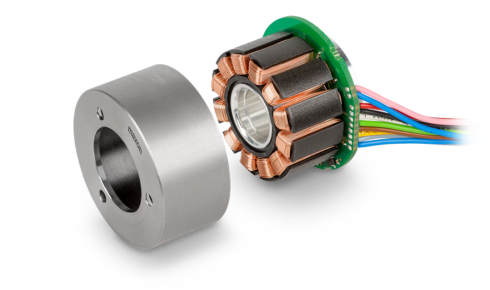Understanding Brushless DC Motors and Gyro Sensors: Key Technologies for Modern Electronics
In the rapidly evolving world of electronics and automation, certain technologies stand out for their reliability, efficiency, and versatility. Two such technologies are the brushless dc motor and the gyro sensor. These components are integral to countless devices and systems, from industrial machinery to consumer electronics, offering improved performance and advanced functionality. Understanding how they work, where they are used, and why they matter can help both engineers and enthusiasts make informed choices for their projects.
What is a Brushless DC Motor?
A brushless DC motor (often abbreviated as BLDC motor) is an electric motor powered by direct current electricity but without the mechanical brushes and commutator found in traditional DC motors. Instead, it uses electronic controllers to switch the current in the motor windings, which creates a rotating magnetic field to drive the rotor.
One of the main advantages of BLDC motors is their efficiency. Without brushes, there is less friction, meaning reduced wear and tear, lower maintenance requirements, and longer lifespan. They also operate more quietly compared to brushed motors, making them ideal for applications where noise reduction is important.
These motors are widely used in applications such as drones, electric vehicles, cooling fans, robotics, and computer peripherals. In electric vehicles, for example, BLDC motors are preferred for their high torque-to-weight ratio and excellent energy efficiency, which directly contributes to better battery life.
How Brushless DC Motors Work
The working principle of a BLDC motor involves permanent magnets on the rotor and electromagnets on the stator. The motor’s electronic controller uses sensors to determine the rotor’s position and precisely times the current supply to each stator coil. This controlled switching creates a smooth and continuous rotation, ensuring optimal performance and speed control.
Because the design eliminates brushes, there is no risk of sparking, making BLDC motors safer in hazardous or flammable environments. They also have better heat dissipation, allowing them to run for longer periods without overheating.
What is a Gyro Sensor?
A gyro sensor, also known as a gyroscope, is a device that measures angular velocity or changes in orientation. It detects the rate of rotation around a particular axis and is widely used in navigation, stabilization, and motion-sensing applications.
These sensors are commonly found in smartphones, game controllers, drones, cameras, and even space exploration equipment. In smartphones, for instance, they enable screen rotation, augmented reality features, and enhanced motion gaming experiences. In drones, gyro sensors help maintain stability by detecting movement and adjusting the flight controls accordingly.
How Gyro Sensors Work
A typical gyro sensor uses the Coriolis effect to detect angular velocity. When the sensor’s internal vibrating structure moves due to rotation, it generates a measurable change in electrical signals, which is then processed by the device’s control system.
Modern MEMS (Micro-Electro-Mechanical Systems) gyro sensors are compact, lightweight, and highly accurate, making them suitable for portable and wearable devices. Their ability to detect even the smallest movements with precision has made them essential in advanced robotics and navigation systems.
Synergy Between Brushless DC Motors and Gyro Sensors
While BLDC motors and gyro sensors are different in function, they often work together in advanced systems. For example, in drones and robotics, BLDC motors provide the movement, while gyro sensors track orientation and stability. The gyro sensor sends real-time feedback to the control system, which then adjusts the motor speed and direction to maintain balance and precise positioning.
Similarly, in camera gimbals, BLDC motors move the camera smoothly, and gyro sensors detect any shaking or tilting. The result is stabilized footage even in challenging environments.
Conclusion
Both brushless DC motors and gyro sensors are fundamental technologies that power many modern innovations. Their efficiency, precision, and adaptability have made them indispensable in industries ranging from automotive to consumer electronics. As technology continues to advance, these components will likely play an even greater role in enabling smarter, more efficient, and more responsive devices.
Whether it’s the smooth rotation of a BLDC motor or the precise orientation tracking of a gyro sensor, these technologies demonstrate how engineering advancements can transform everyday devices into highly capable and reliable tools for the future.





